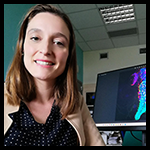
This year too, it is possible to allocate the 5x1000 share of the personal income tax (Irpef) to universities and research centers. You can therefore personally and concretely contribute to the support of Italian scientific research, an important resource for our future and for the development of the country.
Donate your 5xmille to SISSA - tax code 80035060328
How to donate:
To donate your 5xmille to SISSA, just indicate it to your accountant or CAF when filling out your tax return and enter the tax code 80035060328 in the box "Financing of scientific research and universities" and sign in the space below in the 730 form, Unico form or the specific box of the CU form.
If your signature is not accompanied by the tax code, your 5xmille will be divided proportionally to the number of preferences received by the organizations belonging to the same box, in this case that of scientific research and universities.
The choice to allocate the 5xmille to research is not an alternative to financing religious cults (law no. 222 of 1985). Those who decide to support us can therefore allocate the 8 per mille contribution to a confessional entity.
Financed projects:
Eugenio Piasini
Studying neurons computationally

- What research has your group conducted thanks to the donations from the 5xmille?
My research group focuses on computational neuroscience, and one of our current themes is the development of statistical methods for analyzing experimental data that allow us to rigorously answer questions like those just mentioned. 5 × 1000 funds help support our work in this area, enabling us above all to acquire the computational resources needed to iterate rapidly on our model designs. The research is still in an early stage, but thanks also to valuable collaborations with various experimental groups in Italy and abroad, we already have our first encouraging results, which we hope to publish in the coming years.
- Why do you believe it is important to donate these funds to SISSA and what invitation would you extend to people to donate their 5xmille to SISSA?
The 5xmille has been a fundamental support in allowing my newly formed group to advance this project. I believe it is very important for each of us, in our own small way, to contribute to the progress of biomedical scientific research with a small gesture, such as donating our 5xMille. Indeed, the choices we make today will bear fruit in the medical and health advancements we will see in the coming years, which will bring improvements for everyone. Choosing to donate it to SISSA means supporting high-quality scientific research projects, carried out by qualified scientists who are passionate about their work, in a top-level environment.
Alessia Soldano
Studying Alzheimer's Disease

- What research has your group conducted thanks to the donations from the 5xmille?
Thanks to the support of the 5xmille, my group has developed a project aimed at studying the role of brain inflammation in Alzheimer's Disease. This neurodegenerative disease is the most common form of dementia in the elderly and remains incurable to this day. Recent years have seen the emergence of neuro-inflammation as a factor in the onset and progression of Alzheimer's, but there is still much work to be done to fully understand these mechanisms and translate them into treatments. Our project hypothesizes that an increase in neuro-inflammation may represent a crucial and initial step in this disease, and that addressing this process early on may delay or alleviate the onset of symptoms. In the laboratory, we use the fruit fly, Drosophila melanogaster, as a model to study these processes. Thanks to our "Alzheimer's flies," we can monitor the onset of specific symptoms while simultaneously assessing brain inflammation. The project is still in its early stages but is already yielding its first interesting results, and we hope, within a couple of years, to have a precise understanding of the timing of inflammation onset and its effects on neurodegeneration.
- Why do you believe it is important to donate these funds to SISSA and what invitation would you extend to people to donate their 5xmille to SISSA?
The 5xmille has been a fundamental support in allowing my newly formed group to advance this project. I believe it is very important for each of us, in our own small way, to contribute to the progress of biomedical scientific research with a small gesture, such as donating our 5xMille. Indeed, the choices we make today will bear fruit in the medical and health advancements we will see in the coming years, which will bring improvements for everyone. Choosing to donate it to SISSA means supporting high-quality scientific research projects, carried out by qualified scientists who are passionate about their work, in a top-level environment.
Remo Sanges
Studying Xia-Gibbs Syndrome

- What research has your group done thanks to the donations of the 5xmille?
Xia-Gibbs Syndrome (XIGIS) is a rare genetic disorder where a gene called AHDC1 is damaged. It's a neurodevelopmental disorder, which means that, when AHDC1 is damaged, during embryo development, various problems in the brain arise that cause intellectual, motor, and physical disabilities. The 5x1000 funds donated to SISSA in 2021 were used in 2022 to support an ongoing research project in the Computational Genomics laboratory I coordinate to develop resources and fine-tune experiments that allow the study of the molecular functions of AHDC1. This is important because, although the gene is known to be causative of XIGIS, little to nothing is known about its functions in the cell. The resources and experiments that it was possible to produce in 2022 also thanks to the use of 5x1000 funds were: Design and production of an antibody capable of recognizing the protein encoded by the AHDC1 gene. With this reagent, we can identify, visualize, and study the protein produced by the AHDC1 gene in cell extracts and under the microscope. Execution of real-time qPCR experiments. With these experiments, we can validate the transcription of genes that are responsive to the perturbation of AHDC1 resulting from transcriptome sequencing analyses previously carried out within the project. Design and preparation of samples for ChIP-seq experiments on HP1 and AHDC1. With these experiments, we can identify the genomic regions bound by HP1 and AHDC1 in response to the perturbation of AHDC1. These are crucial experiments because they help to understand what happens to chromatin organization in response to perturbations of AHDC1 and thus to identify possible regulatory pathways that may be interesting molecular targets in experimentation. Acquisition of reagents and fine-tuning of cell lines derived from XIGIS patients. We have started working on cell lines derived from patients' blood and are growing them in the laboratory. On these, we can perform validations of the expression of genes responsive to perturbations of AHDC1 and use them as cellular models for future experiments. The project began in 2019. To date, it is still ongoing. The results produced so far have allowed us to understand which are some of the genes responsive to perturbations of AHDC1 and which are the possible targets to focus future research on both to understand the molecular mechanisms in which AHDC1 participates and to target in clinical experimentation to try to improve the quality of life for patients and their families.
- Why do you think it is important to donate these funds to SISSA and what invitation would you extend to people to give their 5xmille to SISSA?
SISSA is a place where people with an extremely diverse and heterogeneous background conduct research. One of the features that I like most is precisely that, despite our heterogeneity, we often manage to talk to each other and, driven also and especially by the School itself, we try to integrate our knowledge and scientific interests into collaborative projects that greatly extend the possibilities of a single laboratory and/or a single topic. We often manage to address a scientific question from different points of view, and this leads us more easily and more quickly to produce results useful to the community. Therefore, the 5xmille to SISSA is for 360-degree research.
Giuliano Taccola
Studying Spinal Cord Damage

- What research has your group conducted thanks to the donations from the 5xmille?
I received the SISSA 5xmille in the years 2021 and 2022. These funds contributed to two main projects.
The first focused on the cyclic passive movement of limbs to facilitate respiratory function, a potential rehabilitative approach for treating ventilatory deficits following a spinal injury. The results have been significant. Not only did the SISSA 5xmille funding partially support Rosamaria Apicella's PhD project in Neurobiology, but we also published a scientific article in Scientific Reports in 2023 that has generated another ongoing study. The main result of the study, linking passive limb activity with the initial adjustment of respiratory rate, is being evaluated for potential clinical testing as an innovative evaluation and rehabilitation tool at the Institute of Physical Medicine and Rehabilitation, Gervasutta hospital in Udine.
The second project aimed to monitor the early consequences of spinal cord damage to better understand the mechanisms of trauma to the central nervous system. The SISSA 5xmille funding for this second project enabled the creation of an original prototype used in the project and patented by SISSA. The SISSA 5xmille funding also partially supported Atiyeh Mohammadshirazi's PhD project in Neurobiology. A scientific article was published open access in the journal Cellular and Molecular Neurobiology in 2023. Another article is under review and two more are in the writing phase. Additionally, the SISSA 5xmille. funding allowed for preliminary experiments to be included in a multidisciplinary proposal in collaboration with the University of Genoa and the University of Udine titled "An indole-based conductive biocompatible adhesive to promote charge transfer among nerve structures". This project was funded under PRIN 2022 with €296,218, with SISSA as the national leader for the years 2024 and 2025.
- Why do you believe it is important to donate these funds to SISSA and what invitation would you extend to people to donate their 5xmille to SISSA?
My experience: I returned to Italy in 2019 after spending three years abroad in the USA and UK, only to find myself restarting experimental activity in my SISSA laboratory and rebuilding a team of students and collaborators. At this delicate stage, the pandemic arrived with further restrictions and challenges, particularly for my laboratory located inside a hospital severely tested by the health emergency, including the opening of a COVID care center. At such a difficult time, the SISSA 5xmille allowed me to relaunch experimental activities and expand the laboratory's equipment with some resources that I used to start new research projects, which I could then entrust to my SISSA PhD students who arrived in October 2020. From there, my research activity in Italy resumed.
Donating to SISSA is important because we make responsible use of resources that are subject to rigorous and transparent accounting by the SISSA administrative offices, which boast vast experience in managing research funds. The 5xmille is very important for SISSA researchers because it can be used for various types of purchases: from equipment to consumables to collaborative services. Precisely because it is extremely flexible, the SISSA 5xmille is well-suited to handle unforeseeable costs necessary to develop innovative ideas to possibly include as preliminary data in subsequent national and European funding applications. Donating the 5x1000 to SISSA means advancing basic knowledge and training the scientists of the next future, but also supporting the launch of innovative entrepreneurial initiatives or real therapeutic improvements that can make a difference in clinical practice starting from our region.
2021 Project: Monitoring the initial consequences of spinal cord damage to better understand the mechanisms of trauma to the central nervous system.

